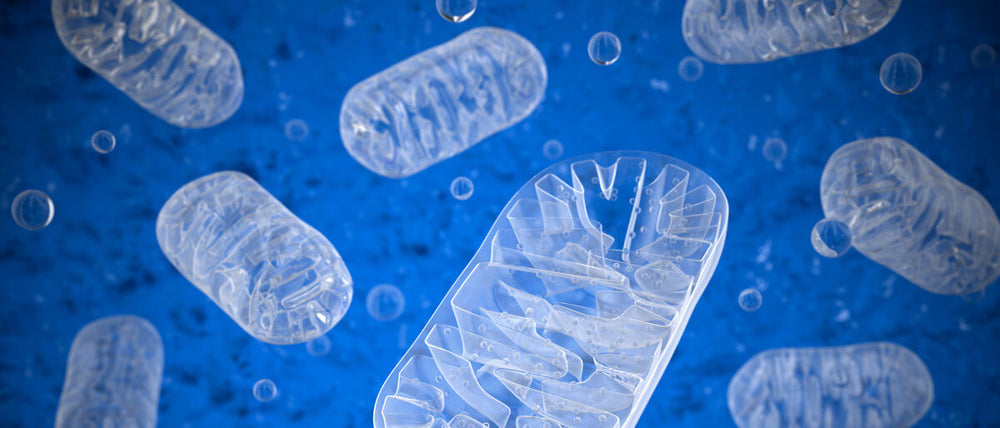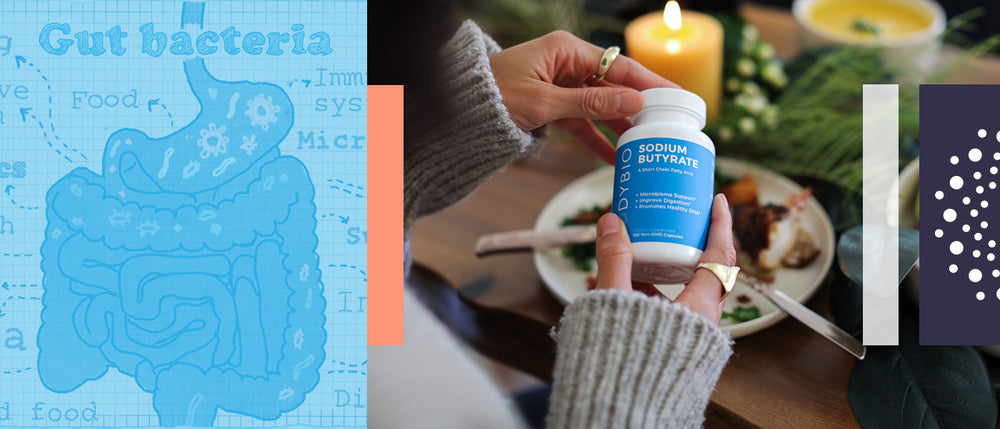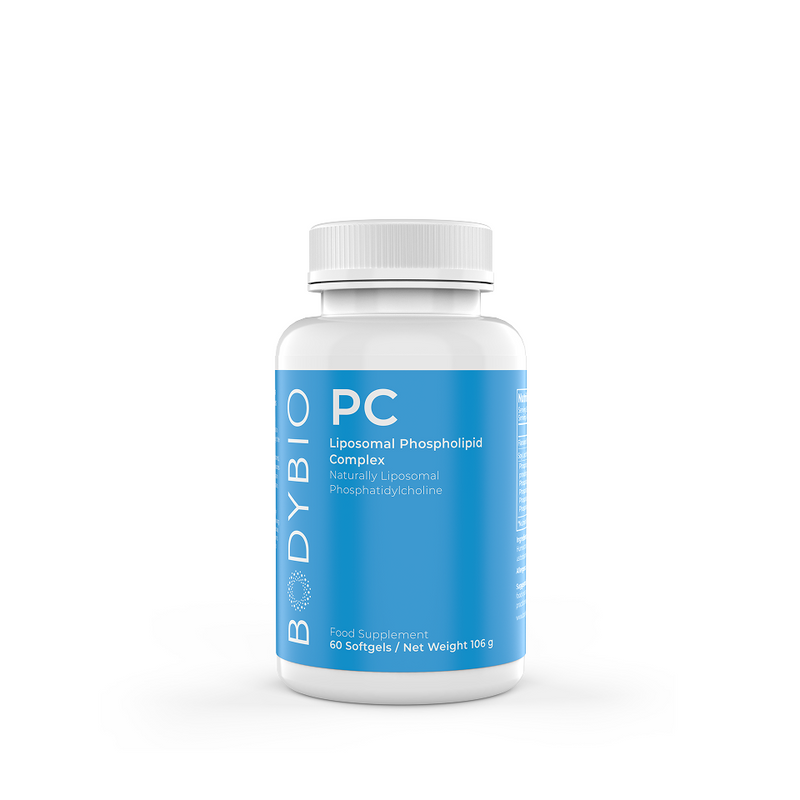Histamine Intolerance: Allergies, Foods to Avoid, MCAS, and More
Histamine intolerance can manifest a wide range of symptoms, ranging from inconvenient to completely debilitating. Autoimmune Disease and allergic disorders like histamine intolerance and MCAS share key features, including that both are the result of a hypersensitive immune system gone wild. It is a condition that can have people jumping from doctor to doctor for years without getting a clear answer for their symptoms.
Today, we’ll review the symptoms and causes of histamine intolerance as well as a closely related condition called mast cell activation syndrome or MCAS, and talk about what you can do to alleviate these conditions.
A brief overview:
- What are histamines?
- What are antihistamines?
- What is histamine intolerance and how do you know if you have it?
- How to test for histamine intolerance
- What is the difference between histamine intolerance and mast cell activation syndrome (MCAS)?
- Histamine treatment: How to clear histamine from the body
- Controlling histamine intolerance with diet
- Histamine intolerance supplements
What are histamines?
Histamine is a biological compound that stimulates the immune response, triggers inflammation, and regulates gut function, hormones and even our sleep. It acts as a neurotransmitter too.
When functioning well, histamine is an important part of the immune system. It activates the immune system against allergens, toxins, and pathogens and participates in managing our most basic health needs. But when histamine is overactive or a person does not have the best genetic pathways to process this multipurpose compound, it can become destructive and cause a wide variety of symptoms. [1]
What are antihistamines?
Antihistamines (aka mast cell stabilizers) are medications or herbs that block histamine receptors, reducing histamine symptoms. There are four types of histamine receptors; H1, H2, H3, and H4. Antihistamines don’t reduce the amount of histamine in the body itself, they merely keep you from feeling the effects by blocking the receptor. This means that for antihistamines to be effective, you have to keep taking them, usually at least once every 12 hours. Most people associate antihistamines with managing seasonal allergies. [2]
Histaminergic neurons, neurons that produce histamine, are key modulators of our sleep and wakefulness. So, a common side effect of antihistamines, blocking histamine receptors, is drowsiness. When histamine levels in the brain are high, insomnia can manifest. [1]
What is histamine intolerance and how do you know if you have it?
Histamine intolerance happens when your body releases too much histamine to handle, causing many potential symptoms from a stuffy nose to GI distress to fatigue. Histamine intolerance may occur due to low functioning DAO or HMNT enzymes, which break down histamine in the gut and the liver. It can also occur when you eat too many histamine containing foods, since we also get histamine through our diet. [3]
Histamine intolerance symptoms and reactions
There are dozens of symptoms and reactions associated with high histamine in the body. These are just a few:
- Hay fever: runny nose, watery eyes, itchiness, etc.
- Skin reactions, hives, flushing
- Fatigue
- Joint pain/ bone pain
- Headaches
- High inflammation
- GI issues, food allergies
- Brain fog/ cognitive impairment.
In reality, we could add 20 more symptoms to this list, but each person’s experience with histamine reactions is different from the next.
How to test for histamine intolerance
If you suspect you have histamine intolerance, it’s best to work with a qualified practitioner that can help you identify and treat the root cause of your symptoms.[4]
There isn’t a clear cut test for histamine intolerance, but an experienced practitioner can help you evaluate your symptoms and health history to diagnose histamine intolerance. If you suspect histamine intolerance, the next step would be to start a low-histamine diet. Your response to the diet — whether you feel better or your symptoms remain the same — will help confirm or deny the diagnosis.
Histamine and DAO or HNMT
There are a couple of important enzymes that break down histamine: DAO and HNMT. Diamine oxidase (DAO) is present in the gut, and histamine N-methyltransferase (HNMT) is found in the liver. Sometimes these histamine decomposing enzymes don’t function well or there aren’t enough of them to manage all of the histamine in the body. DAO can be measured, but it’s not a particularly reliable way to diagnose histamine intolerance, since DAO levels can fluctuate and we don’t know where else it might be present in the body. [5]
Histamine intolerance vs. MCAS (mast cell activation syndrome)
You often hear histamine intolerance and mast cell activation syndrome or MCAS used together or even interchangeably. But they are not exactly the same thing.
MCAS is a multi system, multi symptom inflammatory condition where the mast cells–- white blood cells that are part of your innate immune system, your first line of immune defense–-become overactive in response to many different stimuli like allergens, foods, hormones, EMF’s, stress, chemicals, or pathogens (often more than one).
Mast cells actually release histamine, along with 1000 other potential compounds, so when they are overly active they are constantly dumping histamine into your bloodstream, causing the symptoms of histamine intolerance.
Mast cells are present in all tissues of the body that come into contact with the outside world, so your lungs, intestinal tract, nasal passages, etc., but they are also present in all of your organs and many other areas of the body. Mast cells are nearly everywhere, hence the wide range of symptoms with MCAS.
MCAS symptoms
MCAS often presents as a strange collection of symptoms, so it’s easy to misdiagnose or go undiagnosed. Some of these symptoms are:
- Blotchy skin, hives, bumps
- Classic allergy symptoms: stuffiness, runny nose, itchy eyes, etc.
- Fatigue
- Hormone imbalances
- Joint pain
- Cardiovascular symptoms: hypotension, tachycardia, etc.
- Gastrointestinal: diarrhea, bloating, pain, constipation, etc.
- And many more.
Look familiar? These are many of the same symptoms as histamine intolerance, which is why it can be difficult to distinguish between the two. As with histamine intolerance, MCAS is notoriously difficult to diagnose. Many patients go years or decades without answers or jumping from diagnosis to diagnosis.
The symptoms can also come and go in waves as one ages. Still treatment and management of the condition are possible particularly in the hands of the right physician, and MCAS, although it creates hyper-inflammation, is not typically life-threatening or life-shortening. [6]
Histamine intolerance treatment: How to clear histamine from the body
Histamine Blockers
As mentioned earlier, histamine blockers do not actually reduce histamine in the body, they merely block the receptors so that you don’t feel the symptoms. Still, they can be useful for managing symptoms while you work on reducing your overall histamine load with diet, supplementation, and exercise.
You’re probably familiar with common antihistamines like diphenhydramine, cetirizine, and others. Consult a practitioner on what options are best for you.
Controlling histamine intolerance with diet
Changing your diet to avoid high histamine foods is one of the best things you can do to reduce your overall histamine levels. When you begin eliminating foods, it’s also important to carefully record what you are taking and what foods, if any, you are adding in, along with the symptoms you are experiencing each day. This way, you will begin to realize what are trigger foods for you and what foods are totally safe.
And don’t forget to enjoy the foods you can eat, and experiment with introducing new foods periodically. Over time, you may find that you even react less severely to previously triggering foods once your histamine levels have been reduced. [7]
High histamine foods to avoid
Okay, let’s get into what are some of the foods you should stay away from with histamine intolerance or MCAS. High histamine foods to avoid include:
- Strawberries
- Coffee
- Dairy, including aged cheeses (Tolerance widely varies from person to person.)
- Alcohol
- Chocolate
- Shellfish
- Smoked meats & aged meats
- Beans and pulses
- Soy
- Nuts, including walnuts, peanuts, cashews, pecans,
- Sunflower & pumpkin seeds
- Vinegar
- Most citrus fruits
- Nightshade vegetables like tomatoes & peppers
- Wheat germ
This is in no way an exhaustive list, and you may find that some foods affect you more than others. Still, staying clear of these foods for at least a month and noting your symptoms can give you a good picture of your sensitivities. [8]
Low histamine foods
With any diet change, it’s best to focus on what you can have rather than what you can’t. Here are some low histamine foods you can enjoy regularly:
- Very fresh meat, fish, or anything perishable. Degradation of these foods contributes to higher histamine, so it’s important to get the freshest option available.
- Egg yolks
- Fresh dairy, raw or pasteurized
- Many fresh veggies: broccoli, cauliflower, carrots, celery, etc.
- Rice
- Many fresh fruits: apples, blueberries, blackberries, pears, etc.
- Coconut
- Macadamia nuts
- Maple syrup & stevia
- Salt
- Herbal teas like unfermented Rooibos
If you eat leftovers, they should be quickly frozen and later thawed and consumed immediately for the lowest histamine content. Otherwise, leftover food left out or in the fridge is subject to high histamine content.
For more details, you can check out the Swiss Interest Group Histamine Intolerance (SIGHI) list here.
Other antihistamine herbs and compounds
In addition to chemical histamine blockers and managing your diet, you may find certain herbs and other natural compounds to be very beneficial in lowering histamine and controlling symptoms.
Stinging nettle is an herb you could call a natural histamine blocker, blocking histamine from H1 receptors, but it also prevents mast cells from releasing histamine in the first place. Because of these effects, it is a popular choice for natural seasonal allergy relief. [9]
Quercetin is a popular antihistamine polyphenol found in produce like broccoli, apples, grapes, as well as herbs and teas. Quercetin is anti-inflammatory and capable of modulating the immune response, including mast cells. It also is an extremely powerful antioxidant and has been shown to have a protective effect from respiratory distress and illness, such as asthma. [10]
This may be a surprising one, but aloe has actually been shown to stabilize mast cells and prevent degranulation (when mast cells release inflammatory compounds like histamine as part of the immune response). Plus, aloe is well known for being anti-inflammatory and highly soothing to the gut. You can juice the whole leaf or buy a premade juice for a refreshing, antihistamine beverage. [11]
Histamine intolerance supplements
There are several supplements you can use to decrease histamine and manage histamine intolerance symptoms.
Zinc
Zinc has been a popular choice for a while now when it comes to supporting your immune system. It is involved in the regulation of mast cell degranulation and can prevent histamine release. One study on 19 hemodialysis patients showed a significant decrease in serum histamine levels with increased zinc supplementation. [12]
Vitamin C
Good old vitamin C is another basic, yet powerful supplement that can decrease histamine and relieve intolerance symptoms. Vitamin C can help you produce more of the DAO enzyme to break down histamine. Plus, it’s a powerful antioxidant that can reduce inflammation throughout the body.
However, if you have histamine intolerance or MCAS, you want to avoid citrus sourced Vitamin C supplements. Sea buckthorne or camu camu, a South American berry high in vitamin C and low in histamine and oxalates, is a good option in this case. You can easily find it in a powder or capsule form. [13]
Phosphatidylcholine, E-lyte, and More
We have also heard from practitioners using BodyBio supplements with their patients that BodyBio PC, our liposomal phosphatidylcholine supplement, as well as our Balance Oil and E-Lyte supplements have been beneficial in addressing MCAS and histamine intolerance. Since PC and Balance Oil support cell membrane integrity and E-lyte helps regulate electrical potential and cellular function, it isn’t surprising to us that they would help with mast cell stability!
Supplements to avoid with histamine intolerance
Some say to avoid probiotics or only choose “low histamine” probiotics for histamine intolerance. However, there isn’t really any scientific evidence to back this up, and probiotics are likely to help balance your microbiome, which is good for being able to process the histamine you get from your food. Probiotics will also help lower inflammation in the gut and maintain the gut lining, keeping histamine levels down.
That being said, always work from your symptoms and how you feel when taking supplements. You’re the best judge of whether a supplement is helping your symptoms or not, and you should never feel like you have to take something just because it’s recommended for a certain condition.
Let BodyBio help you manage histamine intolerance
At BodyBio, we’re all about cellular health, and cellular health is at the center of MCAS and histamine intolerance. When we are able to stabilize and regulate mast cell activation and histamine release, we can reduce histamine levels and relieve symptoms of histamine intolerance.
Click here for more information on our PC, Balance Oil, E-Lyte, and Liquid Zinc supplements.
https://hoffmancentre.com/treatments-for-lowering-histamine-and-reducing-mcas-symptoms/
https://hoffmancentre.com/histamine-intolerance-actually-mast-cell-activation-syndrome/
https://healinghistamine.com/what-is-histamine/histamine-intolerance-symptoms/
https://healinghistamine.com/what-is-histamine/diagnosing-histamine-disorders/
https://healinghistamine.com/blog/dr-janice-joneja-histamine-intolerance-interview-transcript/
https://www.histamineintolerance.org.uk/about/the-food-diary/the-food-list/





